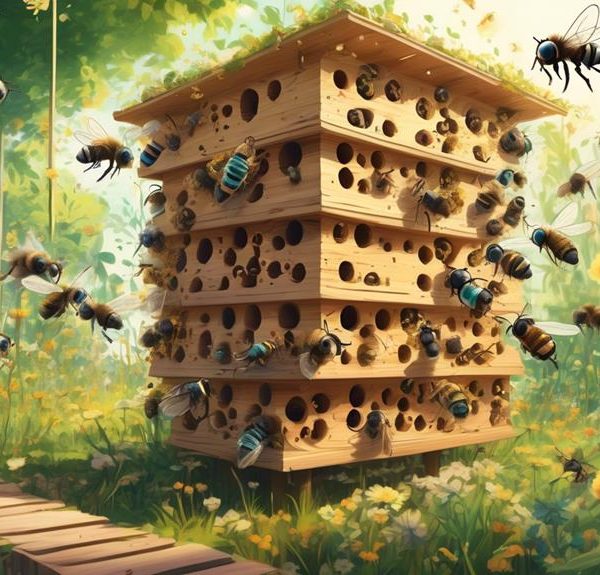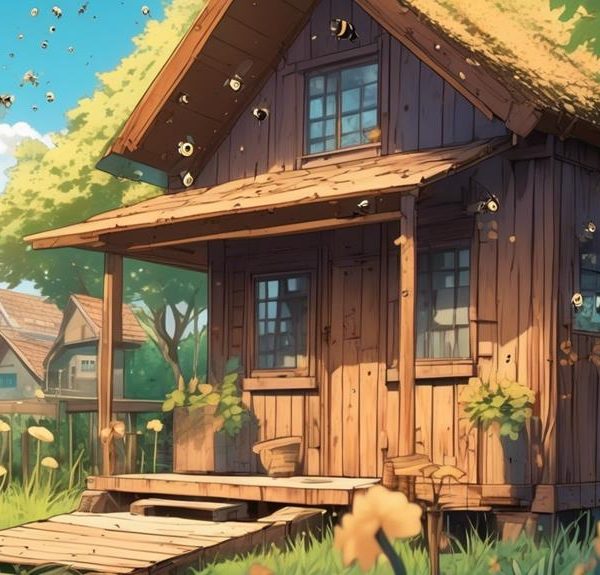Solving the mystery of whether mason bees and honey bees compete or coexist, this article delves into the intriguing world of these vital pollinators.
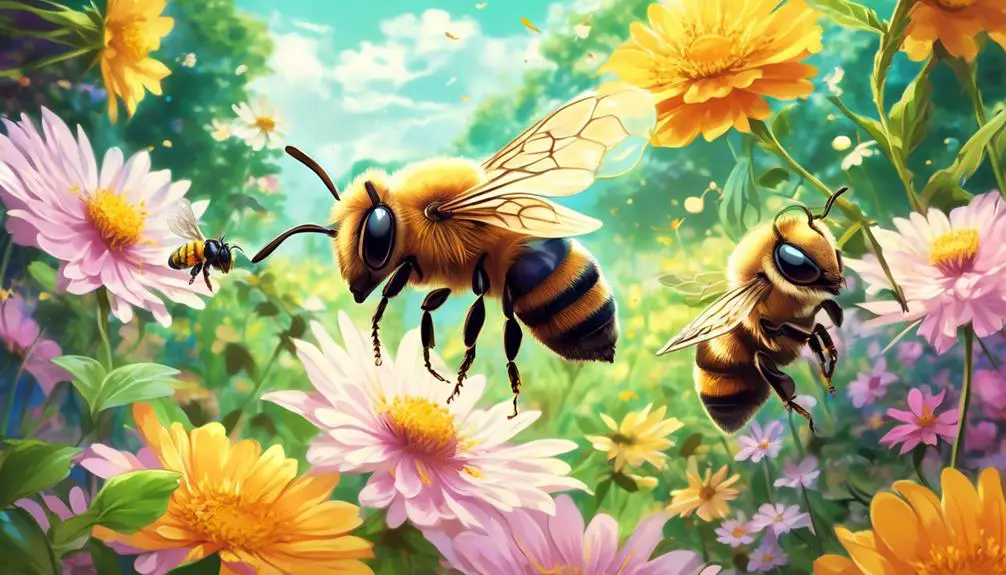
Do Mason Bees Compete With Honey Bees?
You might not be aware, but not all bees live in hives. Mason bees, for instance, are solitary creatures that lay their eggs in small holes or tubes. Unlike their honey bee counterparts, which are known for their social structure and honey production, mason bees lead a more independent life.
But here's where it gets interesting: both these species are key pollinators, crucial to our ecosystem. So, do they compete for the same resources, or have they found a way to coexist harmoniously?
The answer might just surprise you, and it's worth sticking around to find out.
Key Takeaways
- Mason bees and honey bees have distinct foraging patterns, with mason bees foraging in small areas near their nests and honey bees flying further distances and preferring a wider variety of plants.
- Coexistence between mason bees and honey bees is more prevalent than competition, as they have evolved to adapt to different foraging behaviors and seasonal preferences.
- Mason bees are exceptional pollinators that focus on thorough pollination in small areas, while honey bees pollinate on a larger scale and travel great distances.
- Both mason bees and honey bees play important roles in ecosystem health and biodiversity, with mason bees boosting the health and diversity of local flora and honey bees aiding in cross-pollination and enhancing genetic diversity and resilience.
Understanding Mason Bees: An Overview
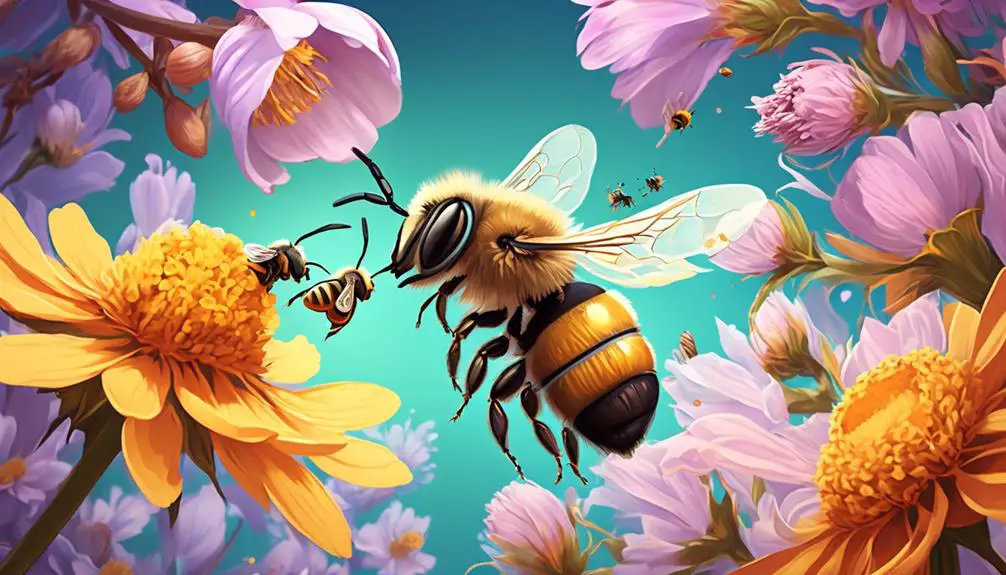
To truly appreciate the role of mason bees in our ecosystem, you need to delve into their unique characteristics and behaviors. Unlike honey bees, mason bees are solitary creatures. Each female is a queen, laying her eggs in individual cells within a nest. She'll gather pollen and nectar, create a food ball, and place one egg on each ball before sealing the cell with mud, hence their name.
You'll find them buzzing around in early spring, as mason bees are among the first pollinators to emerge after winter. They're less temperature-sensitive than honey bees, working in cool or rainy conditions, which makes them vital to early spring blossom pollination.
Mason bees are also non-aggressive insects. They won't sting unless trapped or squished, which makes them a safer choice around children and pets. But don't mistake their peaceful nature for laziness. A single mason bee can pollinate as much as a hundred honey bees. Their fuzzy body picks up pollen easily, and they don't have pollen baskets, which means they're messy pollinators, dropping pollen everywhere they go, resulting in more pollination.
Honey Bees: Nature's Busy Workers

In contrast to the solitary mason bees, honey bees are social insects, living in large, well-organized colonies where they work tirelessly to produce honey and pollinate plants. You'll find them in hives, buzzing about in a flurry of activity, each bee assigned a specific role. From the queen, the sole egg-layer, to the worker bees, who collect nectar and pollen, and the drones, whose purpose is to mate with the queen, each bee contributes to the colony's success.
Honey bees are vital for ecosystem health. They're primary pollinators, transferring pollen from male to female flower parts. This act fertilizes plants, allowing them to produce fruit. Honey production is another critical aspect. Bees transform the nectar they collect into honey, their food source during winter months. This sweet product is also beneficial for humans, both as a natural sweetener and for its medicinal properties.
Despite their significance, honey bees face numerous threats. Pesticides, habitat loss, climate change, and parasites are among the challenges these industrious creatures are battling. As you delve deeper into the world of bees, you'll understand why protecting honey bees is a matter of global importance.
The Dynamics of Bees' Resource Utilization

Understanding how bees utilize resources is crucial to appreciating their role in our ecosystems and agriculture. They're not just buzzing around aimlessly; there's a sophisticated process at play. Bees, both mason and honey varieties, rely heavily on flowers for their sustenance. They extract nectar and pollen, vital resources for their survival and reproduction.
You might wonder about the competition between these bees for resources. Well, it's interesting to note that mason bees and honey bees have different foraging habits. Mason bees are solitary and have a shorter foraging range, often sticking close to their nesting sites. On the other hand, honey bees, being social insects, have a larger foraging range and can travel several miles to find food.
This difference in foraging behavior reduces the competition between these two species. Essentially, they're able to share the available floral resources quite effectively. But the dynamics can change with variations in flower abundance and diversity. A decline in floral resources could potentially spark competition.
Therefore, maintaining diverse, bee-friendly landscapes is paramount for the coexistence and prosperity of both bee species.
Competition or Coexistence: Exploring Relationships

How do mason bees and honey bees navigate their shared ecosystem, and is it more a competition or a harmonious coexistence? The answer lies in the intricate web of bee ecology.
You might assume that these two bee species, sharing the same environment and resources, would naturally compete. However, it's not as straightforward as it seems. Mason bees and honey bees, despite their shared habitat, have evolved distinct foraging patterns and preferences, allowing them to coexist relatively peacefully.
Mason bees, solitary in nature, tend to forage in a small area near their nests. They've adapted to cooler temperatures, often venturing out for pollen and nectar when honey bees are still in their hives. On the other hand, honey bees, social insects, fly further distances to gather food, and their preference for a wider variety of plants reduces direct competition.
Moreover, the two species also have different blooming preferences. Mason bees typically emerge earlier in the year, taking advantage of early spring blooms that honey bees might miss. So, while there are instances of overlap, their survival strategies mostly allow them to share resources without significant competition.
Thus, it's more a case of coexistence than competition.
Impact on Ecosystem and Biodiversity
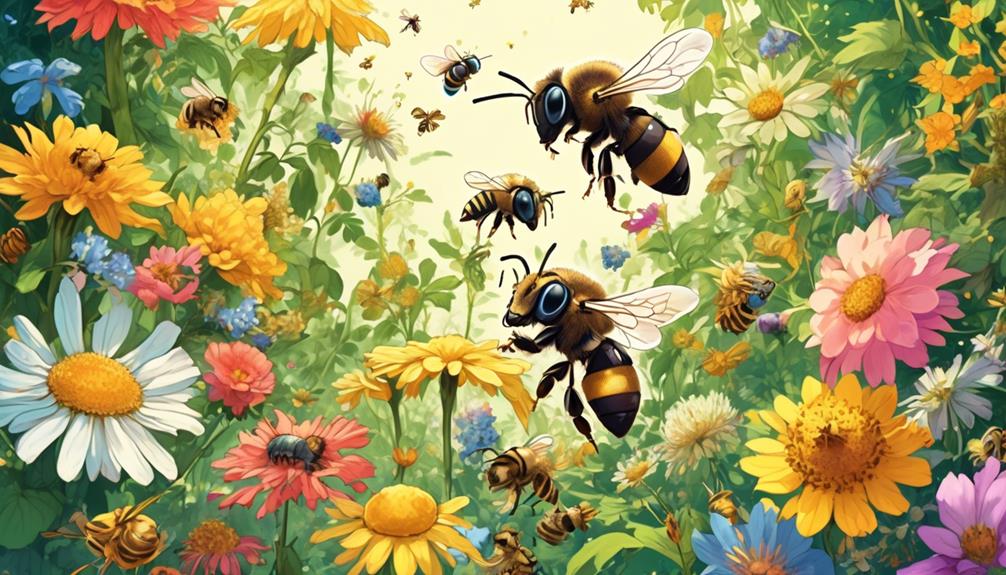
Delving into the realm of ecosystem impact and biodiversity, you'll find that both mason bees and honey bees play pivotal roles, each contributing uniquely to the environmental tapestry.
Mason bees, for instance, are exceptional pollinators. They're solitary creatures, focusing on pollinating small areas thoroughly. This effective pollination boosts the health and diversity of local flora, promoting a more biodiverse ecosystem.
On the flip side, honey bees, being social insects, pollinate on a much larger scale. They're known to travel great distances, spreading pollen across wider areas. This aids in the cross-pollination of different plant species, enhancing genetic diversity and resilience in ecosystems.
However, it's critical to maintain a balanced co-existence between these bees. An overabundance of honey bees can outcompete mason bees for resources, potentially disrupting local biodiversity. Overpopulation of mason bees, too, could lead to an imbalance, as they might over-pollinate local flora, causing strain on the ecosystem.
Therefore, understanding and managing the populations of these bee species is crucial. They each have their unique roles and impacts, and maintaining their balance is key to a healthy, biodiverse ecosystem.
Conclusion
You've learned that mason bees don't compete with honey bees, but instead coexist, utilizing resources differently. This dynamic fosters diversity and aids ecosystem health.
Both bees play distinct, crucial roles in our environment. It's up to us to appreciate their individual contributions and ensure their survival.
Remember, biodiversity isn't just about the number of species, but also about the relationships between them.
Let's foster a world where mason bees and honey bees continue to thrive side by side.

